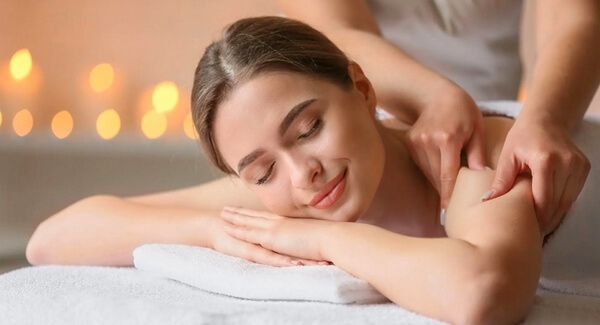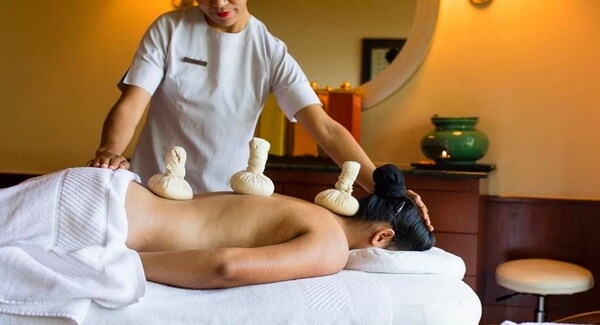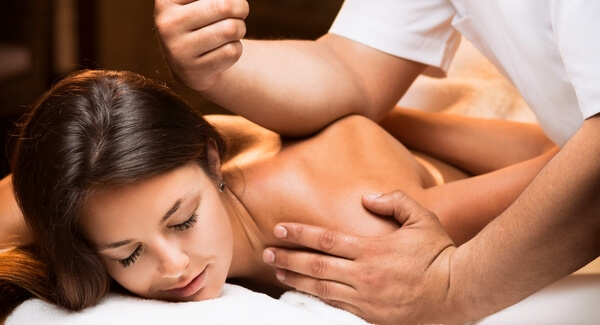How to Talk to Your Therapist for the Best Thai Massage Experience

The difference between a merely pleasant Thai massage and a truly transformative therapeutic experience often hinges on a single factor: communication. Yet many people approach massage sessions with the assumption that they should remain silent, endure discomfort without complaint, or trust the therapist without providing feedback. These misconceptions can significantly diminish the benefits of treatment and, in some cases, lead to uncomfortable or even counterproductive experiences.
Effective communication between client and therapist transforms Thai massage from a standardised procedure into a personalised healing encounter tailored to your unique needs, preferences, and responses. When you actively participate in this dialogue, you empower your therapist to work more effectively, reduce the risk of injury or discomfort, and maximise the therapeutic benefits you receive.
This article explores why communication matters so profoundly in Thai massage, what to communicate at different stages of your session, how to express your needs effectively, and how to navigate the balance between conversation and silence. By understanding and applying these principles, you'll enhance not only individual sessions but your entire journey with Thai massage as a healing practice.
Why Communication Matters: The Foundation of Effective Treatment
Before exploring specific communication strategies, it's valuable to understand why dialogue proves so essential in Thai massage.
The Uniqueness of Each Body and Session
No two bodies are identical. Your patterns of tension, flexibility limitations, pain thresholds, emotional holding patterns, and energetic blockages differ from those of every other person. Therapists, regardless of their skill and experience, cannot read minds or automatically know your internal expertise.
Safety and Contraindications
Thai massage involves significant pressure, deep stretching, and joint mobilisation. Certain health conditions require modified approaches or contraindicate specific techniques. Your therapist needs to be aware of these conditions to adapt treatment accordingly.
The Therapeutic Relationship
Healing occurs most effectively within a relationship characterised by trust, mutual respect, and collaborative intention. Communication builds this relationship. When you feel heard, respected, and actively involved in your care, you relax more deeply and benefit more fully from treatment.
Before the Session: Setting the Foundation
Effective communication begins before the therapist's hands touch your body. The pre-session conversation establishes the foundation for everything that follows.
Health History and Current Concerns
What to communicate:
- Medical conditions: Disclose any chronic health conditions, even if they seem unrelated to massage
- Recent injuries or surgeries: Mention anything from the past year
- Medications: Some medications affect tissue sensitivity or blood clotting
- Pregnancy: Inform your therapist immediately if pregnant
- Pain or discomfort: Describe location, quality, triggers, and duration
- Previous massage experiences: Share what worked well and what didn't
How to communicate it: Be direct and complete. Use clear language and don't assume the therapist can see or intuit your conditions.
Your Goals and Intentions
What to communicate:
- Primary concerns: What brought you to Thai massage?
- Areas needing attention: Which parts need the most work?
- Desired outcomes: How do you want to feel afterward?
How to communicate it: Be specific rather than vague. Express priorities if you have multiple concerns.
Preferences and Boundaries
What to communicate:
- Pressure preferences: Firmer or gentler based on past experience
- Areas to avoid: Injured or sensitive regions
- Conversation preferences: Silence or explanation
- Environmental preferences: Temperature, music, lighting
How to communicate it: Use clear, direct language without apologising. Expressing boundaries is essential self-care.
During the Session: Real-Time Communication
The conversation doesn't end when the massage begins. Ongoing communication throughout the session allows dynamic adjustment to your responses.
Pressure Feedback: The Most Critical Communication
Why it matters: Pressure represents perhaps the single most important thing to communicate. Too little provides insufficient benefit; too much triggers protective guarding or causes injury.
Appropriate intensity:
- Feels like a "good hurt," tissues releasing or stretching
- You can breathe through it relatively comfortably
- Creates a sense of relief as the therapist works
- You remain relatively relaxed rather than bracing
Excessive intensity:
- Feels like actual pain rather than therapeutic discomfort
- Makes you hold your breath or tense up
- Feels wrong, not just uncomfortable
- Creates a sense of being injured
How to communicate: Use clear language like "That's too much pressure, please lighten it" or "You can go deeper on my back, it feels good."
Communicating About Specific Sensations
What to mention:
- Sharp pain: Never normal, warrants immediate communication
- Numbness or tingling: Should be mentioned for position adjustment
- Nausea or dizziness: Always mention these
- Breathlessness: Communicate immediately
- Emotional responses: Normal and therapeutic, but therapists appreciate knowing
- Areas feeling particularly good: Positive feedback helps therapists understand what works
The Conversation vs. Silence Balance
One of the most common questions is whether to talk or remain silent during a massage.
The Case for Silence
Benefits:
- Enhances relaxation and meditation
- Reduces mental activity
- Allows emotional and physical processing
- Deepens the therapeutic experience
The Case for Conversation
Benefits:
- Reduces anxiety through explanation
- Facilitates learning about your body
- Builds connection and comfort
- Addresses concerns immediately
Finding Your Balance
Most effective communication involves a flexible approach: brief conversation at the beginning, periods of silence during main work, short check-ins as needed, and brief conversation at the end. Tell your therapist your preference.
After the Session: Completing the Communication Loop
Communication doesn't end when the massage does. Post-session dialogue provides valuable information for optimising future treatments.
Immediate Feedback
What to share:
- How you feel overall
- What worked particularly well
- What was challenging
- Any concerns about unusual sensations
Frame feedback constructively and honestly. You're providing data that helps refine future sessions.
Questions About Response and Aftercare
What to ask:
- "Is it normal to feel (describe sensation)?"
- "How should I expect to feel over the next day or two?"
- "Any stretches or self-care you'd recommend?"
- "How often should I schedule sessions?"
- "What should I do if I feel (particular sensation) later?"
Scheduling and Planning
What to discuss:
- Frequency: Based on your response and goals
- Focus for next session: What should the next session emphasise?
- Progression: Treatment plan and expected timeline
- Modifications needed: What should change next time?
Special Communication Considerations
Certain situations require particular communication approaches.
When You're in Pain
Pain makes communication difficult. Be as specific as possible about location and quality. Use pain scales if helpful. Express your tolerance limits clearly. Don't try to "tough it out" if pain is acute.
When You Have Trauma History
For people with trauma history, particularly related to touch, communication becomes essential. You do not need to disclose details unless you choose to. Simply stating "I have touch sensitivity, and I need to feel in control" provides sufficient information. Establish clear agreements about stopping immediately when you ask.
When English Isn't Your First Language
Language barriers can complicate communication. Seek therapists who speak your language if possible. Use translation apps for health history. Learn key phrases like "too hard," "softer please," "stop," "good," and "pain here." Use gestures and sounds. Have written information about health conditions to share.
Cultural Considerations
Communication styles vary across cultures. Regardless of your cultural background, in the therapeutic context, direct communication about your body and comfort is essential for your wellbeing. Therapists should create explicit permission for communication, repeatedly inviting feedback to help clients from less direct cultural backgrounds feel comfortable expressing needs.
Practical Communication Tips: Quick Reference
Before Your Session
- Arrive early to allow time for discussion
- Bring written health information if you have a complex history
- Be honest and complete about health conditions
- Clearly state your goals and priorities
- Express any concerns or preferences
- Ask questions about anything unclear
During Your Session
- Speak up immediately about excessive pressure or discomfort
- Use simple, direct language: "Softer please," "That's too much"
- Breathe audibly if that helps you process intensity
- Don't apologise for communicating needs
- Ask questions when curious or concerned
- Trust your instincts; if something feels wrong, say so
After Your Session
- Share honestly how the session felt
- Provide constructive feedback about what worked and what didn't
- Ask questions about responses and aftercare
- Discuss frequency and focus for future sessions
- Follow up if questions or concerns arise later
Finding the Right Practitioner
Effective communication requires a therapist who welcomes and responds appropriately to your input. For those in the UK seeking practitioners who prioritise clear communication and client-centred care, you can find Thai massage therapists in the UK who understand the importance of this therapeutic dialogue.
Conclusion: Communication as Healing Practice
Communication in Thai massage is not merely a practical necessity; it's an integral part of the healing process itself. When you actively participate in dialogue with your therapist, you're not being demanding or difficult; rather, you're engaging in a collaborative process. You're engaging as a co-creator of your healing experience rather than a passive recipient of treatment.
This active participation embodies several healing principles:
Self-advocacy: Learning to articulate your needs and boundaries in the massage setting often translates into better self-advocacy in other life areas.
Body awareness: Communicating about what you feel requires paying attention to your body's signals, deepening the mind-body connection that Thai massage seeks to enhance.
Trust building: The vulnerability of communicating needs and the experience of being heard and respected builds trust, both in your therapist and in your own capacity to care for yourself.
Empowerment: Recognising that your input shapes your treatment empowers you as an active agent in your own wellbeing rather than a passive patient dependent on expert authority.
Relationship: The therapeutic relationship that develops through honest communication becomes itself a healing force, reminding you that connection, mutual respect, and collaborative care are possible and beneficial.
Thai massage offers profound benefits for physical health, flexibility, pain relief, and stress reduction. Yet these benefits fully emerge only when the practice occurs within a framework of transparent, honest, ongoing communication between client and therapist. By understanding why communication matters, what to communicate at different stages, and how to express yourself effectively, you transform each session from a generic treatment into a personalised healing encounter ideally suited to your unique body, needs, and journey toward wellness.
The next time you schedule a Thai massage, remember: your voice is not an interruption to the healing process. It's an essential instrument through which healing becomes possible.
Search Massage Therapists Near You.
More From Our Blog
Latest Blogs
Tips: How to Create the Perfect At-Home Mobile Massage Experience
Massage Therapy as a Career: Pathways to a Fulfilling Profession Globally
Building a Brand of Trust: Digital Age Strategies for Massage Therapists
The Future of Touch: How Technology is (and Isn’t) Changing Massage Therapy
A Global Look at Massage Therapy Qualifications - USA, Canada, Australia & Beyond
Beyond the Salon: Unique Massage Therapies You Never Knew Existed
The Power of Two: Exploring the Benefits and Etiquette of Couples Massage
Massage for Every Body: Celebrating Inclusivity in the Wellness Space
Why Men Are Embracing Professional Massage More Than Ever Before
The Healing Hands: Inspiring Stories of Massage Therapists Changing Lives
View All Blogs
Advertise with Massages Me and Grow Your Business!
Create an Ad within minutes & increase your earning potential as we connect you with more clients!



